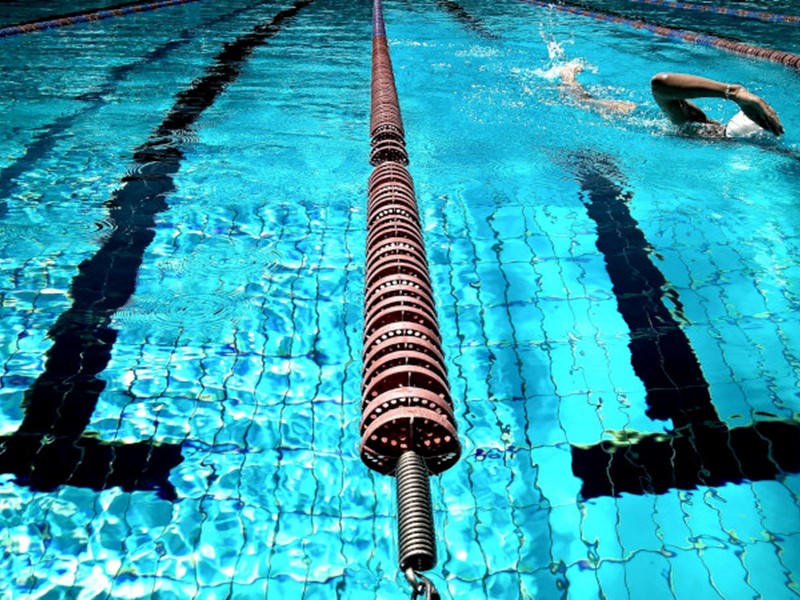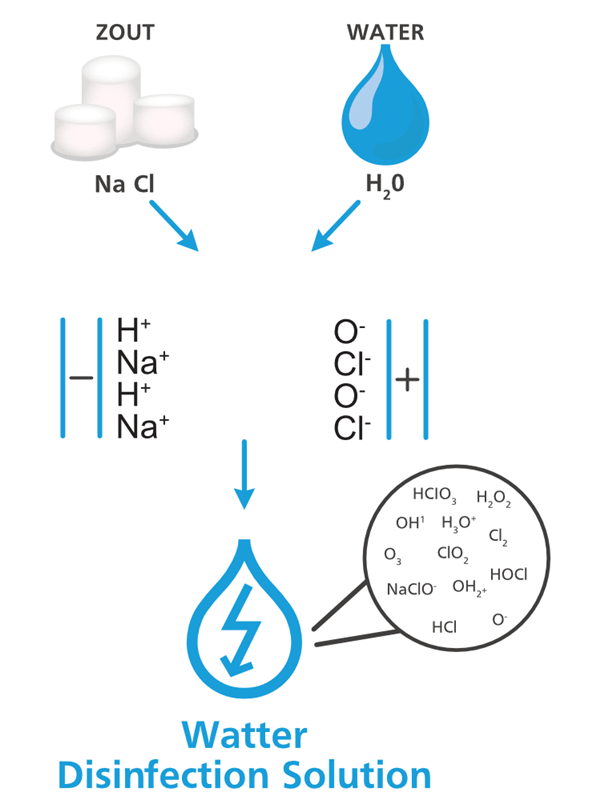The alternative to sodium hypochlorite
Looking for an substance that has the same application as sodium Hypochlorite, but with a much lower chance of residues such as chlorite and/or chlorate? Discover the advantages of our disinfectant over NaOCl below.

What is sodium hypochlorite (NaOCl)?
Sodium hypochlorite is a disinfectant widely used for water and surface disinfection. It is also the active ingredient in many common bleaches. Sodium hypochlorite is among other methods produced by electrolysis of sodium chloride in water and its chemical formula is NaOCl, but it is also produced by passing chlorine gas through a solution of sodium hydroxide.

What is sodium hypochlorite used for?
The most well-known example is the use of bleach for cleaning and disinfection of sanitary facilities. However, dentists also use sodium hypochlorite in a lower concentration during root canal treatments, for example. It is also used to disinfect drinking water and in swimming pools to keep pool water free of microbiological contamination.
In addition, it is also used in factories to disinfect their process water.
Disadvantages Sodium Hypochlorite
- High risk of disinfection byproducts
Because the dosage must be relatively high in order to have a sufficient biocidal effect, the risk of unwanted residues, so-called disinfection byproducts such as chlorite or chlorate, is much higher than with alternatives such as HOCl. These disinfection byproducts can have an impact on the foodstuffs, but also on the health of your employees - A lot of plastic waste
In many cases, sodium hypochlorite is purchased in barrels and/or jerry cans. These create a large waste stream within companies, not forgetting storage space. - Lots of CO2 emissions
Of course, those jerry cans and barrels must also be delivered to the site. The goes with the necessary fuel consumption and thus CO2 emissions.

The alternative: Watter Disinfection Solution
Watter Disinfection Solution produced on site is the sustainable alternative to sodium hypochlorite. It is not harmful to the environment and to human and animal health. But what makes Watter Disinfection Solution a good alternative to sodium hypochlorite?
How does Watter Disinfection Solution work?
The main active ingredient in Watter Disinfection Solution is HOCl (also called hypochlorous acid). Because of our innovative Watter technology, we can also produce it on-site by electrolyzing salt dissolved in water. This creates a disinfectant in which HOCl is the main active ingredient. Because HOCl has an oxidizing property, this disinfectant is very effective against fungi, yeasts, bacteria and viruses. This disinfectant can be applied and used in many areas where hygiene is very important. For example, it is widely used to promote drinking water disinfection in livestock farms and process water disinfection in industry.
What is the difference between hypochlorous acid and sodium hypochlorite?
|
Hypochlorous acid |
Sodium Hypochlorite |
|
|
Wetenschappelijke formule |
HOCl |
NaOCl |
|
Production |
Elektrolysis of water and salt |
Through a chemical reaction between chlorine a sodium hydroxide |
|
Kleur |
Transparent |
Pale, greenish yellow |
|
Effective |
Effective against:
|
Effective against(At a 250x higher concentration than HOCL)
|
|
Side Effects |
|
|
|
Warning Symbols |
N/A |
  |
Convinced?
That Watter Disinfection Solution is also the perfect alternative to Sodium Hypochlorite for you?



